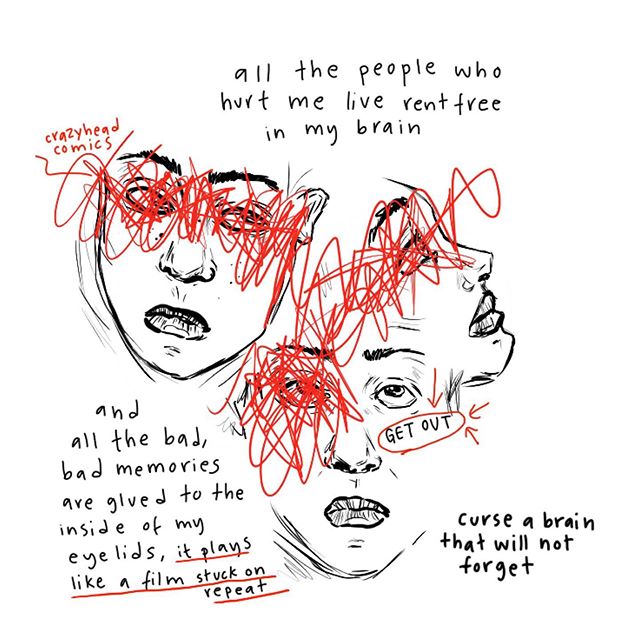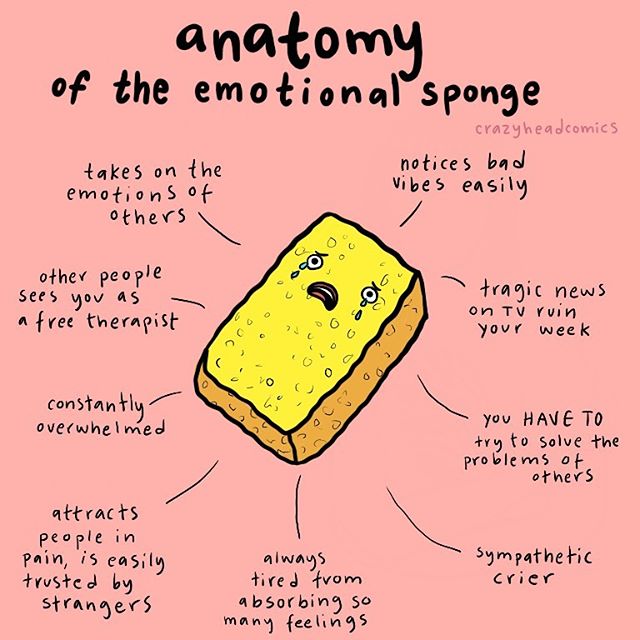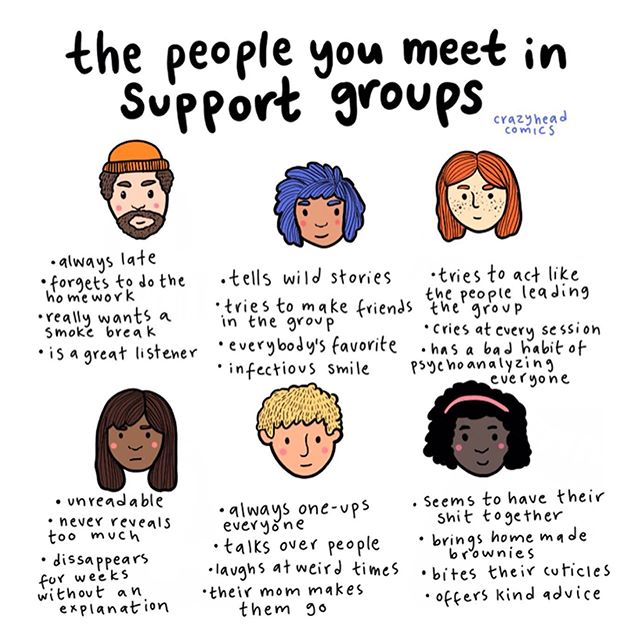Crazy Head Comics: 21-year-old Swedish artist draws cartoons to promote mental health awareness
For 21-year-old Matilda Heindow, Bipolar Disorder, General Anxiety Disorder, PTSD, ADHD are not just names of mental conditions; these ailments have, for the last six years, dictated every aspect of her life. The Swedish born artist was only 15 when she was first diagnosed with Bipolar Disorder, other diagnoses soon followed. Matilda has spent a majority of her young adult life in therapy and on medications, but she refuses to let her mental health issues dim her light.
Instead, she created Crazy Head Comics, an Instagram page that uses colourful cartoons and encouraging captions to promote discussions on mental health and urges followers to seek help when required. Matilda’s unique initiative, with more than 1,40,000 followers, has become one of Instagram’s well-loved pages on mental health.
TAL caught up with Matilda to learn more about her struggles with mental conditions, the artists that have inspired her, and her future endeavours.
Before we talk about your wonderful art, please tell us something about yourself.
I was born and raised in Stockholm and am a professional artist and cartoonist, but most of my income comes from my job as a substitute teacher. I have lots of hobbies; enjoying art in all its forms, writing and poetry, true crime and horror, astronomy, psychology, fashion and thrifting, and learning Swedish sign language.
What prompted you to start Crazy Head Comics?
After the completion of post-graduation, I felt stagnant and needed an outlet for my creativity. I have always been open about my mental health and had just begun to learn digital art. I thought of combining my newly acquired skill with my older passion for mental health advocacy. I was aching for a community of people with whom I could relate to and decided to create one myself. I also wanted to provide a platform to those who were suffering from mental illnesses and were scared to talk about it for fear of stigma.
Could you tell us a little about your own mental health story? When and what were you diagnosed with, and how do you counter the difficulties these conditions bring?
I was 15 when I went to therapy for the first time. My mom thought I was suffering from Depression and persuaded me to see a therapist. I was diagnosed with Bipolar Disorder II and Generalised Anxiety Disorder. Not long after that, I started Swedish high school, and the change hit me hard. I developed social anxiety and panic disorder, and those few years in school were hell.
However, with a lot of Cognitive Behavioural Therapy (CBT) and challenging my social anxiety by meeting new people while doing a job in retail, I slowly started getting better.
I was feeling positive about my recovery, but my therapist suspected I had Attention Deficit Hyperactivity Disorder (ADHD) as well. I was sure I didn’t! I didn’t want a new diagnosis after coming so far in my recovery. However, I did the prescribed tests for ADHD – mostly to please my therapist – and turned out that I have the ‘textbook version’ of ADHD inattentive type.
I thought that diagnosis would be my last, but at 17, I went through much trauma, which led me to develop Post Traumatic Stress Disorder. For a long time, I felt like such a failure; I didn’t know anyone with as many diagnoses as me. However, I kept going to therapy, had different medications, went to support groups, kept living my version of normal, and I think I am doing a lot better now.
My two greatest learnings were these: self-compassion and a positive outlook help you tremendously when you’re sick. You have to keep working on yourself, even through days when everything seems dull or challenging.
How do you come up with ideas for your comics? What is the thought process behind it?
I have always been very imaginative, and coming up with ideas was never an issue. I have jotted down hundreds of ideas on my phone for comics and illustrations. My biggest problem is deciding which ideas are good. Psychology is one of my favourite subjects to read up on, and that helps me produce topics and themes for my artwork.
To create cartoons, I use a Wacom tablet and software called Sketchbook pro. I scroll through my notes and pick the idea I’m most excited about, then I just draw.
What is the primary message you hope your comics communicate?
There are many messages I’d like to convey; the biggest one probably is – as cheesy as it sounds – ‘you’re not alone’. I have several mental ailments and am not ashamed to draw attention and awareness to it. I used to be, but I don’t see the point of keeping my experiences to myself when it might help someone else cope better with their lives. I want others to feel comforted in the knowledge that there is someone who understands them as they are and that mental illness is not a lonely road.
I want mental conditions to be thought of and spoken about as nonchalantly as physical ailments like diabetes or allergies are spoken about. The stigma around mental illnesses should be broken.
Your comics are colourful and vibrant while talking about a serious subject. Is the choice of colour and vibrancy a deliberate attempt to create a more powerful impact?
Colour makes me happy, so I figured it would be the same for others too. My art has always been colourful, and I have always been drawn to colourful art in museums and books. I can appreciate a black and white realistic portrait for its technical brilliance, but it doesn’t make me feel anything. It bores me a little, to be honest. Also, bright colours catch the eye, and it is also a great tool to draw people’s attention on Instagram.
Tell us about your support system; how have your family and friends helped you get over turbulent times? Was it easy to have a discussion about your mental state with your close ones?
The biggest blessing of my life is the people around me, especially my parents, who have always been incredibly supportive. My mom would book therapy appointments, request my schools to provide extra support, and help me cope when situations became overwhelming. She’s an absolute angel!
My dad didn’t know much about mental illnesses, but he follows me on Instagram and reads my captions and the comments that follow. He’s learnt a lot and better comprehends mental conditions now. But he was always understanding! My friends are also amazing; they’re all a bit unconventional in their own ways, so I never feel ashamed to be myself around them.
Your cartoons provide a great deal of solace to those going through a tough time. Whose artistic work do you turn to for inspiration, especially during rough days?
I draw much inspiration from female painters, especially Louise Bourgeois, Frida Kahlo, and Yayoi Kusama. Sylvia Plath’s confessional style poetry also kept me afloat during those gritty teenage years - she’s an undying inspiration for me.
You must be receiving many messages from those who love your work and the philosophy behind it. Has there been a message that has been truly unforgettable?
I receive a lot of beautiful messages and wouldn’t be able to pick just one. However, it melts my heart a little more when a parent of a follower reaches out to say how much their child loves my art and that it has been a source of light in their lives. That always tears me up.
Also, I feel a sense of pride when a teacher or psychiatrist asks for permission to print out my work to display it in their offices for their students and patients.
Sweden has a dedicated ambulance service for mental health conditions – the first country in the world to do so. As Swedish, do you think your country has taken necessary steps to engage with mental health issues, or is there more to be done?
I feel incredibly fortunate to live in Sweden. A therapy session costs me about 100 Swedish krona per session, and before I turned 18, therapy was free. I got plenty of support in school, which made it easier as well.
However, there’s always more to be done. I wish there was equal emphasis on regular mental health check-ups like there is on physical health check-ups. Also, early intervention is essential when it comes to mental illnesses, and I think schools could do more to teach students about mental health from a young age. I appreciate our health care a lot, but it’s not perfect. I know people who have had bad experiences with Swedish mental health care, so I think it varies a lot depending on where one goes for their mental health diagnoses and consequent therapy sessions.
Reports state that annually, about 1,500 suicides and 15,000 suicide attempts are reported in Sweden. Despite being one of the world’s best countries to live in, with proper infrastructure and healthcare in place, what, according to you, leads to such high rates of mental ailments?
I think there are many reasons why suicide is such a rising issue, worldwide, and not just in Sweden. Many a time, suicide stems from illness, a feeling of hopelessness, current crisis in one’s life, and ignorance about the availability of mental health care facilities, among others. Most people who commit suicide are men, because male sadness is perceived as a weakness and attracts stigma.
A country could have the best healthcare in the world, but if suicidal thoughts are considered a taboo, we are less likely to seek help. If the stigma is removed, we will do better in handling mental health concerns in the country. Moreover, it’s difficult for young people in Sweden to find employment and housing, which can lead to hopelessness and suicidal thoughts.
Our weather might also impact our wellbeing, and Sweden tends to get rather cold and dark throughout the year.
How do you think we can break the stigma around mental health issues and provide the care and support that people dealing with these conditions need?
I think the best way to fight against the stigma is to be open about our mental health. Being able to have honest and vulnerable conversations about difficult topics helps tremendously. We need to realise that we’re not alone or isolated in our experiences of mental health and mental illnesses. We also need access to information about mental health care, which will guide us to the help we need.
We need an accurate representation of mental illness in media, and governments should step up and take action by providing accessible and cheap medical care.
As a mental health advocate and cartoonist, what are your plans for the future?
I would like to continue to work on Instagram and see where it takes me. I want to provide free information about mental illness in a way that is fun and humorous, honest, and easy to understand.
As an artist and writer, there are plenty of things I would like to do like write and illustrate books; both fiction and non-fiction, on living with mental illnesses. In future, I might dabble in graphic novels and video documentaries as well.
I want to inspire people to live a fulfilling and joyous life despite their mental state, and through my art instill hope in those who need it the most.
Follow Crazy Head Comics on Instagram.
















